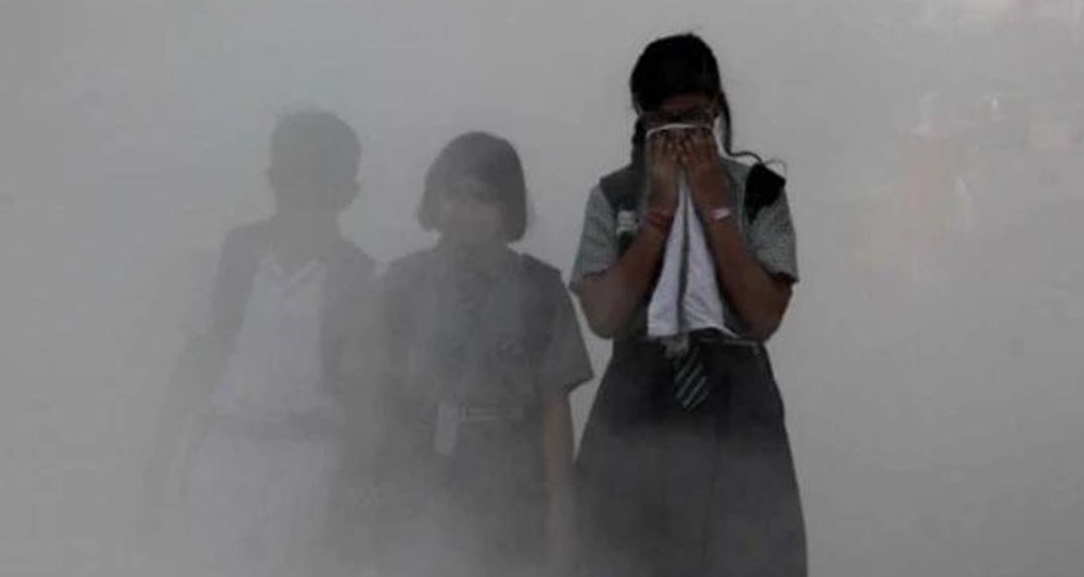Coronavirus is a family of a large group of viruses. It infects not only humans but also animals mostly bats, Camels and cattle. Thanks to the most recent Covid-19 it’ll be hard to find someone who doesn’t know about Coronavirus. But how much do we really know about the history of coronavirus ?
history of Coronavirus
There are a total of 7 Coronavirus that can infect humans. The first human coronavirus was discovered in 1965. Dorothy hamre, a researcher from the United States was the first person to be able to isolate a virus that causes common cold. This positive single-stranded RNA virus was later named 229E. Two years later another type coronavirus was discovered that causes common cold. This one was named OC43. But at that time not much effort was in coronavirus research.
In 2002, nearly 3 decades later the SARS came out. The SARS Cov-1 can cause life threatening respiratory illness that can also lead to pneumonia. This virus is also very infectious. 774 people died in the 2002-2004 SARS outbreak. SARS showed us how much of a threat the coronavirus family is to mankind. After that much more effort were put into research and to contain the spread of the virus. In 2004 another one was identified. this virus could cause mild to moderate infection in human respiratory system. This one was named NL63. A year later another coronavirus was found which had similar affects as the NL63. The virus was named HKU1. Scientific research revealed both this virus has already spread through the world and are responsible for a portion of common cold cases.
In 2012 a rather deadly virus was identified in Middle East was later named MERS.
Scientists believe MERS-Cov originated from bats. But since humans are typically infected from Camels, it earned the nickname camel flu. By the end of 2019, 2500+ people were infected by MERS-Cov and fatality is frighteningly over 30%.
In 2019 the latest human coronavirus SARS CoV-2 Came out. This virus is responsible for Covid-19 and the ongoing pandemic. In general both the virus and the disease caused by it are simply referred to as coronavirus. SARS-CoV 2 is very contagious. The outbreak started in Wuhan, China and since then has spread to 192 countries and by the end of April 2021, the death toll was well past 3 million. Covid-19 has brought the coronavirus family into limelight. There are also animal coronavirus. Bats, Camels, cattle, mice, cats are mostly infected by animal coronavirus.
Today we’ll discuss about all the coronavirus and their history in details.
Discovery of coronaviruses
The first discovered coronavirus was not a human coronavirus. Avian infectious bronchitis virus(IBV) also known as avian coronavirus was the first coronavirus to be discovered. In 1931 This virus was found in chickens. It affects upper respiratory tracts, gut, kidney and reproductive system of chickens. IBV is a major cause of economical losses in poultry industry. Since then a lot of animal coronavirus have been found.
As for the human coronavirus, Hcov-229E was the first one to be discovered. It was discovered in 1965. Shortly after Hcov-OC43 was discovered.
Since 21st century started, 5 more human coronavirus were found in a very short amount of time. NL63 was discovered in Amsterdam, Netherlands on 2004. A 7 month old baby was infected by it. A year later HKU1 was discovered. It was found in a 71 year old male who had returned to Hong Kong from shenzhen, China a few days ago. Thus raises the suspicion that the virus originated in China. The SARS outbreak also started from China. This virus was first identified in guangdong, China on 16 November 2002. But the outbreak was successfully and there had been no known transmission since 2004.
The first case of MERS coronavirus was in Jeddah, Saudi Arabia. Most of the patients identified are from Arabian peninsula. MERS can cause deadly respiratory illness and has a fatality rate of over 30%.
Discovery of Covid-19 Coronavirus
The World Health Organization (WHO) got information of cases of pneumonia of unknown reason on 31 December 2019. A new and unknown type of novel coronavirus was the reason behind them. On 7 January 2020 this virus was temporarily given the name 2019-nCov. It was later renamed as SARS Cov-2 and the disease caused by it was given the name Covid-19. Covid-19 outbreak also started in China. It was discovered by Chinese authorities in Wuhan which is the capital city Hubei province in central China. A 55 year old person may have been the first person to come in contact with the virus. Apparently scientists believe that the outbreak started from a open air wet market in Wuhan. The market was for trading livestock, meat and fish. Soon it spread throughout the whole world and more than 4 million people have died by now. The World Health Organization declared the Covid-19 outbreak a public health emergency of international concern on 30 January 2020, and a pandemic on 11 March 2020.
SARS Outbreak
Discovery and naming of SARS
Severe acute respiratory syndrome(SARS) was first discovered in guangdong provide which is located in southern China. The outbreak was first reported on 16 November of 2002. This disease was caused by an unknown never seen before pathogen. Following the SARS outbreak the World Health Organization(WHO) announced a global warning in 12 November 2003. Soon after, 13 laboratories from 10 different countries started a joint collaboration project to find out the reason behind the SARS outbreak. Countries that took part in the collaboration are United States of America, United kingdom, China, Canada, France, Germany, Hong Kong, Taiwan, Japan, Netherlands and Singapore. The primary goal was to find the cause of the SARS outbreak and also to develop a diagnostic test system. WHO supervised the whole project and it’s work progress. The project started to show results soon and in one month they were able to determine the reason behind the SARS outbreak and what causes the SARS disease. On 16 April 2003, the World Health Organization held a press conference officially declared that what causes SARS is a new type of coronavirus previously unknown to mankind. It was given the name severe acute respiratory syndrome coronavirus or SARS-CoV. After the discovery of Covid-19 in 2020 which is caused by a coronavirus of the same species, now the older SARS virus which caused the 2002-2004 SARS outbreak is called SARS-CoV-1 while the virus that causes Covid-19 is known as SARS-CoV-2.
Virology
SARS-CoV-1 is an enveloped positive sense, single stranded RNA virus. This virus belongs to the Coronaviridae family of Orthornavirae kingdom and Riboviria Realm. Compared to other viruses SARS is relatively bigger. Size of a single virus is between 60-120 nanometer. It can be seen by an Electron microscope.
Transmission
SARS is transmitted through droplets that are released in the air when a human infected with the virus speak, sneeze or cough. Droplets can spread as far as 2 meters and infect a healthy person if within the radius and inhales those droplets. SARS can also also spread through physical contact. For example, if a person touches something that has the virus or contagious droplets in its surface left by an infected person and then touches his/her face, he or she can be infected. Research has showed that SARS patients are not contagious before the they develop any symptom.
Symptoms of SARS
SARS has an incubation period of 2 to 7 days. But In Rare occasions it can be as long as 10 days. During incubation period the infected person shows mild symptoms. Almost everyone infected with SARS developed fever during the first week. Sometimes the fever is combined with simple uneasiness, chills or muscle pain. Only a few of them shows mild respiratory symptoms from the onset. About 1 out of 15 patients suffer from diarrhea. Once the incubation period ends, SARS patients may develop a dry cough along with hypoxia. About one out of every 5 patient(20%) requires hospitalization and mechanical ventilation since they have difficulty to breath normally.
Most SARS patients suffer from serious lung infection knows as pneumonia. In most cases, condition of a person infected with SARS gets the worst during 3rd week and they gradually starts to get better after Month.
Overview of SARS cases
SARS spread worldwide very fast. By the end of July 2003 it spread to 29 countries and Hong Kong and Macau, which are Special Administrative Region(SAR) within China. 8094 confirmed cases were reported from these countries. Majority of them were from China and Hong Kong. Among them 774 people died and others recovered. The death rate of SARS was 9.56%. The epidemic was successfully stopped by July 2003. Strict governance and public health measures played an important role in successfully containing the virus outbreak.
Four more cases were reported in 2004. These cases were result of an accidental laboratory released infections. No more SARS cases have been reported since 2004 and it is very less likely for another SARS outbreak to occur.
Both the SARS-CoV which causes severe acute respiratory syndrome and the SARS-CoV-2 which causes Covid-19 has a lot of similarities since they’re from the same species of coronavirus.
Emergence of MERS
Discovery and naming of MERS
Middle East respiratory syndrome or simply known as MERS is a respiratory disease caused by the MERS coronavirus. It’s complete form is Middle East respiratory syndrome coronavirus(MERS-CoV). The virus is also known as EMC/2012. The reason for which the virus was given the name Middle East respiratory syndrome is because the virus emerged from the Middle East. The first confirmed MERS case was reported in Jeddah, Saudi Arabia in April 2012. After discovery the virus was knows simply as ‘novel coronavirus 2012’ until may 2013. In may 2013 WHO adopted the official name Middle East Respiratory Syndrome Coronavirus (MERS-CoV). This name was first us by the Coronavirus study group of the International Committee on Taxonomy of Viruses(ICTV). Who later adopted the name from them.
The first patient infected with MERS had a fever, cough, expectoration and difficulty to breath. Doctors did research on saliva samples collected from that person and came into conclusion that he had a new and severe flu-like respiratory illness. A virus was isolated from the saliva samples and genome sequencing confirmed that it was a new type of coronavirus. Egyptian virologist Ali Mohamed Zaki was the first person to isolate and identify the virus and so is credited with the discovery of it. A study of Riyadh university suggested that the virus could’ve emerged as long as 5 years ago and was unnoticed until now. After it’s initial discovery it was temporarily named novel coronavirus or simply n-cov. It was also known as Covid-12. Some people called it Saudi Arabia’s SARS like virus since it had a few similarities with the SARS coronavirus that caused the 2002-2004 SARS outbreak. Later, it was officially renamed to Middle East Respiratory Syndrome Coronavirus (MERS-CoV).
Virology
MERS-CoV is an enveloped positive sense, single-stranded RNA virus. This virus belongs to the Coronaviridae family of Orthornavirae kingdom and Riboviria Realm. MERS-CoV is a zoonotic virus and thus can transmit between animals and humans. The genomes of this virus are ethically divided into two clades, clade A and clade B. Earliest cases of MERS were of clade A clusters and later cases were of clade B. Majority of MERS cases are caused by clade B. MERS-CoV is closely related to the Tylonycteris bat coronavirus HKU4 and Pipistrellas bat coronavirus HKU5.
Transmission
Scientists believe MERS Coronavirus originated from bats. However, humans are mostly infected from Camels. That’s why the disease is called Camel flu. Research on Camels have confirmed that dormitory Camels are natural reservoir of this virus. Most of the people are infected when they come in contact with Camels or camel related products directly or indirectly. That’s why the WHO (World Health Organization) and CDC (Centers for Disease Control and Prevention) of United States have suggested people to not to come in contact with sick Camels in order to avoid the risk of getting infected.
MERS can also transmit from person to person. But the possibility of a sustained human to human transmission is very low. Till now mostly healthcare workers have been infected from MERS-CoV patients because they have to stay in close contact with the sick person to provide treatment.
As of now, Camels are the major risk factor when it comes to MERS-CoV. So, if you stay away from. Sick Camels or camel related products, you are safe from an infection. But scientists have shown concerns and WHO have identified the virus as a likely cause of a future epidemic or health crisis. As there is a possibility for the virus to mutate into a strain that does transmit from human to human. Because of that WHO list the virus for urgent research and development.
Symptoms of MERS
MERS symptoms range from mild to severe. Some people experience no symptoms at all. Cough, Fever and shortness of breath are the most common symptoms of MERS-CoV. Many people suffer from abdominal pain, diarrhea and mild upper respiratory infection. Severe symptoms include kidney failure, fatal form of pneumonia and failure in respiratory system which requires mechanical ventilation and intensive care of the patient. Older people and those who has a weak immune system suffer more from severe symptoms. Those who has chronic diseases such as diabetes or cancer are at greater risk. People of any age can be infected by MERS Coronavirus.
A review was done in Saudi Arabia to get a clear picture of the most common symptoms. The review involved 47 laboratory confirmed MERS patients. 46(98%) among them had fever, 39(83%) had cough, 34(72%) suffered from shortness of breath and 15(32%) patients had muscle pain. Gastric related symptoms were also very common with 12(26%) having diarrhea, vomiting in 10(21%) and abdominal pain in 8(17%) patients. Those that suffered from shortness of breath required mechanical ventilation. Of the 47 patients 36 were male and 11 were female.
Overview of MERS cases
First reported in September 2012, MERS transmitted rapidly through contact with infected Camels or people. Later the spread was slowed down by research efforts and preventive health measures. But the virus still remains. Since 2012 more than 2500 people have been confirmed to be infected by the virus. Among them 850+ people(one in every three) have died. Most of the cases were reported in Middle East. Around 80% of the total cases were reported by Saudi Arabia alone.
Since 2012 MERS have been reported by 27 countries. These are Saudi Arabia, South Korea, Kenya, Algeria, Austria, Bahrain, China, Egypt, France, Germany, Greece, Iran, Italy, Jordan Kuwait, Lebanon, Malaysia, Netherlands, Oman, Philippines, Qatar, Thailand, Tunisia, Turkey, UAE, UK, USA and Yemen. Many of these countries have also reported larger MERS outbreak in Camels which resulted in death of many domestic Camels. Almost all the MERS cases are somehow linked to the Arabian peninsula.
Treatment
To this date, there is no specific treatment or vaccine for MERS-CoV. But a few number of vaccines are under development and trial. As of 2021, one DNA based vaccine completed phase 1 clinical trial in humans and a few others are in progress. Since there is no specific treatment or vaccine, patients are given supportive and symptomatic treatment based on their clinical condition and the symptoms they’re showing.
Prevention
To stay safe, WHO recommends to not to come in physical contact with sick Camels and to wash both hands after touching any camel. Camel related products should be handled with caution. For example, camel meat should be appropriately cooked before eating and camel milk should be properly boiled before drinking and both hands are to be washed after touching those and before eating.
As a general precaution, people should practice general hygiene measures such as regularly washing hands, avoid eating raw or undercooked animal meat, wearing a mask when necessary and most importantly avoiding contact with sick Camels. These will save a person from not only MERS but also other deadly diseases.
There has not been much scope for research since around only 2500 cases have been reported so far. The virus carries little chance of a deadly worldwide outbreak. But WHO lists it for urgent research and development because death rate of MERS infected patients is almost 35%. A few vaccine are under development and we believe we’ll have an effective one in a few years.
Covid-19 Coronavirus
Without any doubt, Covid-19 is the worst disease of 21st century. It has already infected millions of people worldwide and killed more than 4 million people. Economical damage worldwide was the worst. Covid-19 is the fifth well documented pandemic of human history. The first case was reported in Wuhan, Hubei, China on 31 December 2019. The outbreak likely started from a wet market where livestock was sold. It transmitted rapidly from people to people and soon spread worldwide. Cases have been reported from all the countries around the world. USA, Brazil and India suffered the most from the virus. Covid-19 is caused by SARS Cov-2 virus. The World Health Organization declared the outbreak of Covid-19 Coronavirus a public health emergency of international concern on 30 January 2020 and a pandemic on 11 March 2020. As of now, there are a few vaccines which are effective against Covid-19. To stay safe wear a mask, maintain social distancing, wash your hands and get yourself vaccinated if you get the chance.














































Add Comment